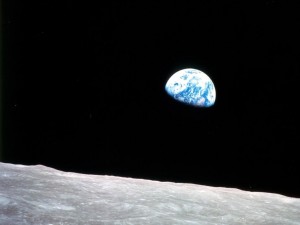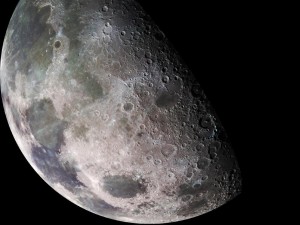The Earth and its moon started with a big bang, according to a new theory from NASA scientists, who believe both were born out of collisions between two massive developing planets.The new theory suggests the two giant planetary bodies, each about five times the size of Mars, collided with each other twice.
After the first collision, the planets smashed into each other again, leaving behind material which resulted in our early Earth. The fledgling planet was surrounded by a disk of left-over material, which later combined to form the moon.
This new theory challenges the widely-held “giant impact hypothesis,” which suggests the moon formed early in our solar system’s history after an enormous impact between Earth and a Mars-sized planet that was still being formed. Some call that protoplanet Theia, after the mother of the goddess of the moon in Greek mythology.
However, skeptics say if the Theia theory were true, Earth and the moon would have different chemical compositions from each other, which they don’t.

Iconic photo of the Earth and moon as seen from the Apollo 8 spacecraft while in lunar orbit on 12/24/1968. (Photo: NASA)
According to the new NASA theory, the two collisions, along with the subsequent melding of left-over material, formed both the Earth and the moon, which is why they have similar chemical compositions. “Our understanding of the solar system is constantly being refined with each new discovery,” says NASA’s Greg Schmidt. “This research illustrates the importance of modeling planetary formation to enhance our scientific understanding of the moon and its place in the solar system.”
The model which demonstrates this new theory was developed at the Southwest Research Institute (SwRI), in San Antonio, Texas by Robin M. Canup.
Canup says her work was inspired by previous studies on the early history of the moon, which explain the similar chemical composition of the Earth and moon, while at the same time producing an appropriate mass for Earth and the moon.
“The ultimate likelihood of each impact scenario will need to be assessed by improved models of terrestrial planet formation,” Canup said. Canup’s work is outlined in Science.
Video: A computer simulation of a low-velocity collision of two protoplanets that contain 45 and 55 percent of the Earth’s mass. Colors indicate particle temperature in kelvin, with blue-to-red indicating temperatures from 2,000 K to in excess of 6,440 K. After the first protoplanetary impact, they re-collide, merge and form a rapidly spinning Earth-mass planet that is surrounded by a disk of particles that would later form the Moon. (Video: Southwest Research Institute)






















Comments are closed.